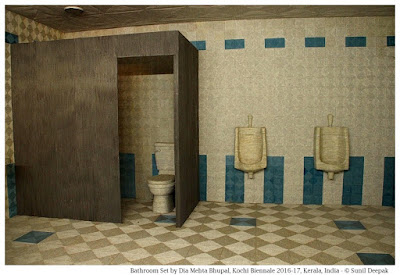A visit to the rock-art site in south-west Mozambique at Chinhampere a few years ago, had touched me deeply and had reminded me about my desire to visit Bhimbethka. Finally, a few months ago I visited it. If you are interested in human evolution and rock art of ancient humans, you will love Bhimbethka. It is located in Madhya Pradesh in the central part of India.
Rock-shelters of Bhimbetka are a World Heritage Monument of UNESCO.
DISCOVERY OF BHIMBETHKA
The rock shelters of Bhimbethka were discovered by V. S. Wakankar in 1957. Wakankar, while passing near Bhimbethka in train was struck by the curiously shaped rocks at the top of the hill and decided to stop and visit them.
Only 15 rock-shelters of Bhimbethka hill are open to public.
Bhimbethka is at one hour drive from Bhopal. You can hire a taxi to visit it. If you prefer public transport, state buses can drop you at about two and half kilometres from the caves.
EARLY HUMANS IN INDIA
In his wonderful book “Indica: A Deep Natural History of The Indian Subcontinent”, Pranay Lal writes that the progenitor of Anthropoids (monkeys, apes and hominins) developed in Asia and from there spread to Africa and other parts of the world. The first human progenitor Homo habilis evolved in Africa. The standing hominid, Homo erectus arrived about 2 million years ago and then over a short period of time spread into different parts of the world including India, China and Indonesia.
Standing posture of Homo erectus resulted in anatomical changes in pelvis which affected child-birth and children being born without fully developed brains, which created social needs for ancient humans to help each other and to live in communities. They learned to use fire, could make sounds for communication and made stone tools (Acheulean stone tools). Erectus arrived in India around 1.5 million years ago. Some of big sites of Acheulean tools of Erectus in India have been found around Siwalik hills.
ANCIENT HUMANS IN BHIMBETHKA
The rocks of Bhimbethka are formed of sand-stone (orthoquartzite), which have been modelled by the natural forces into different shapes, which provided shelters to early humans. They are not caves and therefore called rock-shelters. Some of them are very big, more than 20 metres high.
Not very far from Bhimbethka is a tribal village, which shows the continuity of human traditions in this area.
The rock-shelters open to the tourists are located on a hill and are numbered from 1 to 15. The path between the different shelters has been paved and covers around one and half kilometres. The oldest signs of humans in these rock-shelters go back to around 100,000 years while the most recent signs belong to medieval period.
Archaeological excavations have been carried out in some areas of Bhimbetka that have shown tools, burials and other objects from lower Paleolithic, middle Paleolithic, upper Paleolithic, Mesolithic and Neolithic periods. The lower Paleolithic tools include Acheulean stone implements.
The paintings show mainly human and animal figures and depict scenes from hunting, wars, social and spiritual lives of persons. Trees, plants and flowers are rare in these paintings. Persons riding horses and elephants as well as battle scenes are part of more recent paintings from historical period.
THINGS TO LOOK FOR AT BHIMBETHKA
Personally, I found all the rock-shelters of Bhimbethka fascinating. There were some places where I could have spent hours looking carefully at individual paintings. However, there are some aspects that you can look for specifically during your visit:
Rock-shelter 2: It is an imposing structure shaped like an enormous cave open at the two ends and is known as the auditorium. It is 39 metres long and around 17 metres high.
Rock-shelter 15: This is a very big rock and on one side near the top, it presents a fascinating fantasy scene – a giant boar like animal is chasing a small human figure and a crab. It seems to be the depiction of a mythological story. Because of this painting, it is known as Boar rock.
View Point: Around half-way into the shelters, there is a raised area with a tortoise shaped rock. From here it is possible to see the alluvial plains around Betwa river going towards Narmada river.
CONCLUSIONS
Bhimbethka is an incredible place. Its natural beauty is coupled with a rich cultural, historical and archaeological testimony of the human evolution in central India.
At the rock-paintings of Chinhampere in Mozambique, I had met a woman guardian of the ancient site who lived in the village below. It was not possible to visit those rock-paintings without her permission. She had also explained to me about how the village community continued to venerate those rock paintings during their annual festivals.
This continuity of the sacred relationship between the ancient rock art and traditions of local tribal people seems to missing from the areas open for visits in Bhimbethka. Nor does the site provide any information about the religious/spiritual significance of these rock-shelters to the tribal communities today.
Still it is impossible not to be moved by the art of ancient humans at Bhimbethka. The name of Bhimbethka remembers the muscular Pandav brother Bhim from Mahabharat. Local legends say that Pandavas had lived here during the 12 years of exile.
My interest in ancient humans and their lives was stimulated by the series of books called Earth’s Children by Jean M. Auel in the 1980s and 1990s. If you have not read them, do read them. They will give you a glimpse of the lives of early humans.
I also recommend Pranay Lal’s new book – “Indica: A Deep Natural History of The Indian Subcontinent”. It is an enjoyable read, full of information about geological, archaeological and biological finds in India.
***























































